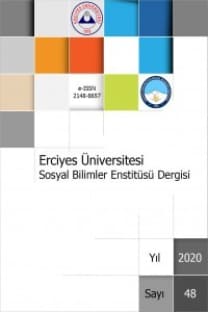Körfez Bölgesinde İslami finansın gelişimi
Bu makale, Körfez bölgesinde İslami finansın gelişimini anlatmak ve bölgenin bu endüstrideki öncü rolünü nasıl geliştirdiğini açıklamayı amaçlamaktadır. Makalede ilgili ikincil literatür ve İslami Finansal Hizmetler Kurulu'nun (Islamic Financial Services Board, IFSB) istatistikleri kullanılmış ve yorumlanmıştır. Bu makale hem Körfez İşbirliği Konseyi (Gulf Cooperation Council, GCC)) ülkelerini hem de İran'ı içermektedir. Bu ülkeler, dünya genelindeki İslami finansal varlıklarının önemli bir bölümüne sahiptir. Körfez bölgesi, İslami finans alanında merkezi bir rol oynamakta ve İslami finans, Körfez bölgesini diğer dünya bölgelerine bağlamaktadır. Körfez bölgesinin bu baskın rolü, nüfusunun şer’i hükümlere uygun ürünleri tercih etmesinden, mali gücünden, hükümetlerin politik desteğinden ve İslami finans kurumlarının uluslararasılaşma çabalarından kaynaklanmaktadır. Makale, bölge içi farklılıklara da ışık tutacaktır.
The development of Islamic finance in the Gulf Region
The article aims at describing the development of Islamic finance in the Gulf region and to explain how the region was able to increase its leading role in this industry. It uses and interprets relevant secondary literature and the statistics of the Islamic Financial Services Board (IFSB). This article includes both the countries of the Gulf Cooperation Council (GCC) and Iran. These countries own the majority of the Islamic financial assets world-wide. The Gulf region plays a central role in Islamic finance and Islamic finance connects the Gulf region with other world regions. This dominating role of the Gulf region is caused by the preference of its population for shari‘a-compliant products, its financial strength, the political support of the governments and the internationalization efforts of its Islamic financial institutes. The article will also throw light on the differences within the region.
Keywords:
Islamic Finance, Islamic Banking, Sukuk, Gulf Region, GCC İran,
___
Babicci, K., & Wongsurawat, W. (2020). Islamic banking in Oman: Laying the foundations. Middle East Policy, 27(1), 115-124.Brauksiepe, R. (1992). Das Bankwesen der Islamischen Republik Iran: Konzepte, Erfahrungen und Perspektiven. Materialien und Kleine Schriften 138, Institut für Entwicklungsforschung und Entwicklungspolitik der Ruhr-Universität Bochum.
El-Ghattis, N. (2014). The futures of Islamic banking in the Gulf Cooperation Council (GCC). Journal of Future Studies, 18(4), 27-44.
Hanieh, A. (2019). New geographies of financial power: Global Islamic finance and the Gulf. Third World Quarterly, 1-22, https://doi.org/10.1080/01436597.2019.1675505
Hasan, M., & Dridi, J. (2010). The effects of the global crisis on Islamic and conventional banks: A comparative study. IMF Working Paper WP/10/201, Washington D.C.: International Monetary Fund. https://www.imf.org/~/media/Websites/IMF/imported-full-text-pdf/external/pubs/ft/wp/2010/_wp10201.ashx
Henry, C. M. (1997). The Mediterranean debt crescent: Money and power in Algeria, Egypt, Morocco, Tunisia, and Turkey. The American University in Cairo Press.
Henry, C. M. (2005). Financial performances of Islamic versus conventional banks. In C. M. Henry & R. Wilson (Eds.), The politics of Islamic finance (pp. 104-128). First published by Edinburgh University Press 2004, Reprint in Karachi: Oxford University Press, 2005.
Islamic Financial Services Board (IFSB) (2013). Islamic financial services industry stability report 2013. Kuala Lumpur: Islamic Financial Services Board. https://www.ifsb.org/download.php?id=4415&lang=English&pg=/sec03.php
Islamic Financial Services Board (IFSB) (2019). Islamic financial services industry stability report 2019. Kuala Lumpur: Islamic Financial Services Board. https://www.ifsb.org/download.php?id=5231&lang=English&pg=/sec03.php
Kahf, M. (2005). Islamic banks: The rise of a new power alliance of wealth and shari'a scholarship. In C. M. Henry & R. Wilson (Eds.), The politics of Islamic finance (pp. 17-36). First published in Edinburgh: Edinburgh University Press 2004, Reprint in Karachi: Oxford University Press, 2005.
Khnifer, M., Baig, A., & Winkler, F. (2010). The rise and fall of Gulf Finance House. https://ssrn.com/abstract=1712059 oder http://dx.doi.org/10.2139/ssrn.1712059
Nienhaus, V. (1982). Islam und Moderne Wirtschaft: Einführung in Positionen, Probleme und Perspektiven, Styria.
Nienhaus, V. (2011). Islamic finance ethics and sharia'ah law in the aftermath of the crisis: Concept and practice of shari'ah compliant finance. Ethical Perspectives, 18(4), 591-623.
Obaidullah, M. (2005). Islamic financial services. King Abdulaziz University.
Gulf News (2014, 08. Oktober). Oman sets up central sharia board to boost Islamic finance. https://gulfnews.com/business/oman-sets-up-central-sharia-board-in-move-to-boost-islamic-finance-1.1396051
Valibeigi, M. (1992). Banking and credit rationing under the Islamic Republic of Iran. Iranian Studies, 25(3/4), 51-65.
Vizcaino, B. (2015, 12. Mai). Iran’s isolated banks may have slow, painful return to global system, Reuters. https://in.reuters.com/article/us-iran-banks/irans-isolated-banks-may-have-slow-painful-return-to-global-system-idINKBN0NX0VK20150512
Warde, I. (2000). Islamic finance in the global environment. Edinburgh University Press.
Wilson, R. (1983). Banking and finance in the Arab Middle East, MacMillan Publishers.
Wilson, R. (2009). The development of Islamic finance in the GCC, Kuwait Programme on Development, Governance and Globalisation in the Gulf States. London School of Economics and Political Science.
- Yayın Aralığı: Yılda 2 Sayı
- Yayıncı: Erciyes Üniversitesi
Sayıdaki Diğer Makaleler
Türkiye’de değişen sosyal ve kültürel kimlikleri bağlamında kadın müzisyenler
Mehtap ULUBASOGLU, N. Oya LEVENDOĞLU
Yabancı dil olarak İngilizce öğretme yolculuğunda yansıtıcı düşünme: Bir durum çalışması
Huriye MANNASOĞLU, Nazlı BAYKAL
Landscape paintings of New Zealand: A journey from North to South
Abdullah TANRIVERDİ, Mustafa ULU
Kuruluş yeri seçiminde analitik hiyerarşi süreci: Kayseri’de bir fast-food zinciri uygulaması
Nihat ÇEŞMECİ, Göknil Nur KOÇAK
Erişilebilirlik ve kent meydanların sürdürülebilirliği: Sakarya/Arifiye meydanı örneği
Buse FAZLIOĞLU, Gülferah ÇORAPÇIOĞLU
Bernini’nin “Apollo ve Daphne” heykeli
Turizm sektörünün bölgesel kalkınma üzerindeki rolü: Kayseri iline yönelik nitel bir araştırma
